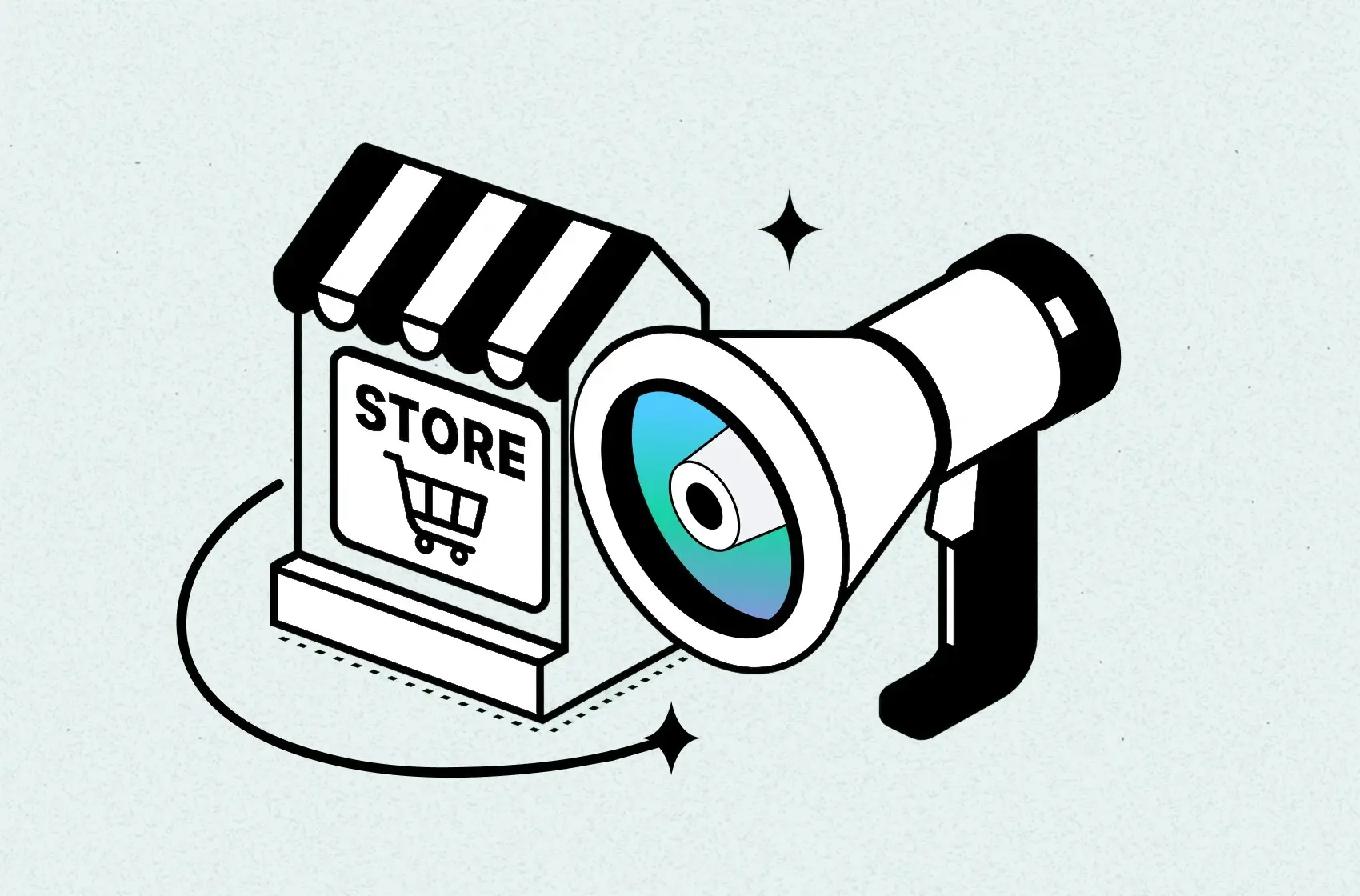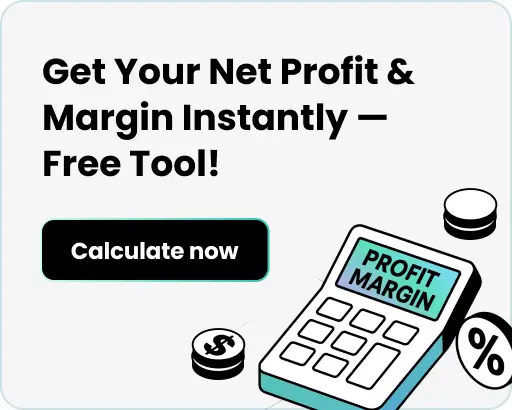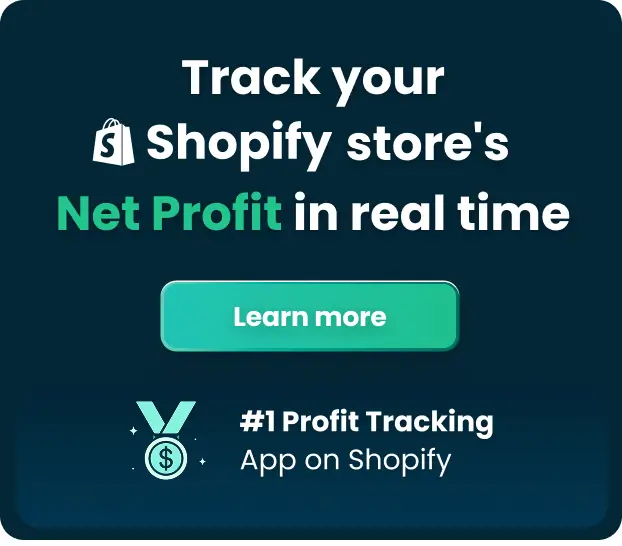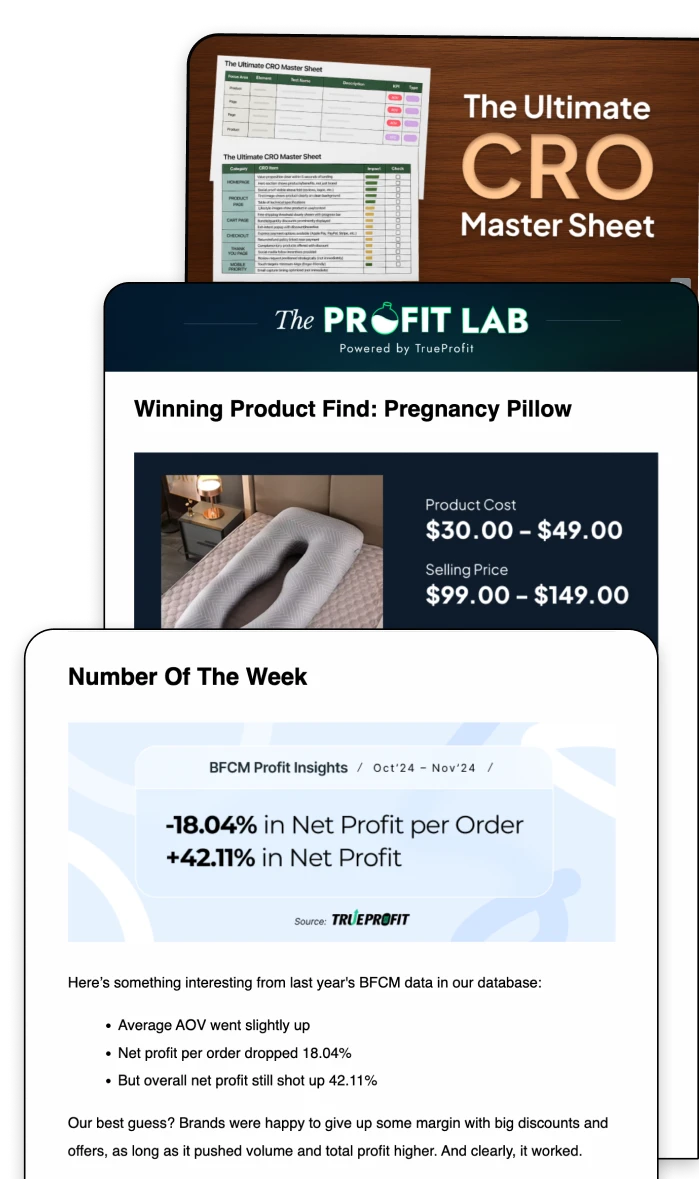How to Promote Shopify Store: 10 Expert Tips for 2025

Promoting your Shopify store isn’t about doing everything - it’s about doing the right things consistently.
The most successful Shopify sellers don’t rely on one silver bullet. Instead, they build an engine: combining SEO for long-term traffic, social media for visibility, email for repeat sales, and influencer or affiliate strategies to expand their reach.
Whether you're new to Shopify or already making some sales, this guide cuts through the noise and gives you real-world strategies that work in 2025. These are the exact methods growing stores are using—and we’ll also show you how to track which channels are actually profitable (because sales without profit = no business).
1. Set a Strong Foundation with Shopify’s Built-In Tools
Before diving into outside platforms, make sure you're squeezing every drop of value out of what Shopify already offers.
Here’s where to start:
- Enable Shopify’s marketing automations like abandoned cart emails, winback flows, and post-purchase follow-ups. These are plug-and-play and often overlooked.
- Add post-purchase offers using apps like ReConvert (covered later) to boost AOV without disrupting the buyer journey.
- Customize your homepage and product meta tags to improve clarity and search engine visibility. Clear product titles, proper meta descriptions, and customer-focused copy go a long way.
- Set up basic analytics through Shopify Reports and Google Analytics so you can benchmark your traffic and conversions.
2. Improve Your SEO to Get Free, Targeted Traffic
Search engine optimization isn’t just for bloggers - it’s a huge opportunity for Shopify sellers who want consistent, high-quality traffic without paid ads. SEO works especially well for evergreen products that don’t rely on trends or niche categories with strong product search intent. Most top selling stores would produce useful content (like blogs or FAQs) to attract this organic traffic.
Key SEO steps to start with:
- Optimize product titles and meta descriptions using long-tail keywords. Use tools like Google Keyword Planner or Ubersuggest to find what people are actually searching.
- Add schema markup to help Google understand your product pages better. This can improve visibility in search results with rich snippets (like star ratings).
- Compress and rename images with alt text that describes the product and includes a keyword if relevant.
- Link between related products and blog content to build internal authority.
3. Build a Social Media Presence That Converts
Social media is still one of the fastest ways to build awareness—but success isn’t about posting for the sake of it. In 2025, high-performing Shopify brands on social media are using short-form video (Reels, TikToks, YouTube Shorts) to showcase real use of their products.
They’re also posting consistently, even with low-effort formats like “unboxing,” “before vs after,” or trending sounds. Among the social media trends, customer testimonials like UGC (user-generated content) is the most popular social content as they build trust fast.
Tips to do social media better:
- Focus on one channel (e.g., TikTok or Instagram) and post 4–5 times a week instead of spreading yourself thin across 5 platforms.
- Use CapCut or Canva templates to make video editing easy, even with zero experience.
- Reply to every comment and DM - it increases reach and helps convert curious scrollers into buyers.
- Repurpose influencer content and UGC in your ads or emails later.
4. Use Influencer Marketing & Affiliate Programs to Get Exposure
When done right, influencer marketing and affiliate partnerships can create a flywheel of trust, awareness, and conversions - without the upfront cost of paid ads.
Influencers already have their audience’s attention. Affiliates have a reason to sell for you. Together, they help you scale faster, especially if you're bootstrapped or new to marketing.
Here’s how to approach influencer marketing:
- Micro-influencers (1K–50K followers) tend to have more engaged audiences and lower rates. Great for UGC or first-time campaigns.
- Use affiliate platforms like UpPromote to manage commissions, referrals, and tracking all in one place.
- Offer a tiered commission structure so top performers are incentivized to stay active.
- Give creators a short brief with content angles that have worked before (e.g., “Here’s how I saved $200 on skincare with this bundle”).
5. Promote Your Store with Email Marketing
Email and SMS are often the most overlooked growth levers for new stores. But the earlier you start collecting contacts, the more owned traffic you’ll have to drive sales later—without paying for clicks.
Whether you’re running a sale, launching a new product, or reminding customers of an abandoned cart, these channels bring them back when it matters.
Here’s how to build your email list and make it work:
- Use popups or embedded signup forms to offer 10% off or a free shipping code in exchange for an email.
- Set up automated flows with tools like Klaviyo or Shopify Email:
- Welcome series
- Cart abandonment
- Post-purchase follow-ups
Product review requests
- Add SMS for high-intent moments like flash sales or abandoned checkout nudges.
6. Test Paid Ads on TikTok, Meta, and Google
Paid advertising (on Meta, TikTok, Google, etc.) can be a game-changer—or a budget-killer. The difference? Whether you’re measuring what actually matters: net profit.
Running ads without a clear grasp of your true costs like product, shipping, transaction fees, COGS can make it look like you’re winning when you’re actually losing money.
Best practices for paid ads in 2025:
- Start with retargeting warm audiences before scaling cold ads.
- Use video creatives for Facebook, Instagram, and TikTok—they typically outperform image ads.
- Launch on one platform (e.g., Meta Ads) until you hit consistent ROAS, then expand.
- Test, but don’t guess: Use a simple structure with 2–3 ad creatives per campaign and track results over 3–5 days.
7. Add Live Chat and Support to Turn Browsers into Buyers
Sometimes, your visitors are this close to buying — they just need a quick answer. That’s where live chat tools can turn hesitation into conversion. Live chat adds a human layer to your store. Buyers trust stores that offer help when they need it.
You can guide hesitant visitors toward the right product, clarify shipping questions, or offer a discount in real time. Even if you're not online 24/7, Shopify Inbox can send automated replies and FAQs to keep the conversation going.
Best practices when adding live chat:
- Use automated welcome messages like “Have questions? Ask me anything!” to invite interaction.
- Tag high-intent conversations and follow up with email if they don’t convert right away.
- Combine live chat with abandoned cart emails for an extra nudge.
8. List on Marketplaces to Reach More Shoppers
Selling on your Shopify store doesn’t mean you have to go it alone. Marketplaces like Amazon, Etsy, and Walmart can give you instant visibility, search traffic, and trust — especially if your brand is still new.
These platforms already have millions of buyers. You’re tapping into demand, not creating it from scratch. You can use them as discovery channels, then build customer loyalty through email, packaging, and follow-ups to bring them back to your Shopify store. Moreover, some product types (like handmade, vintage, or giftable items) perform exceptionally well on Etsy.
Best practices for listing on marketplaces:
- Sync your product catalog using Shopify integrations or multichannel apps like CedCommerce or LitCommerce.
- Use slightly different pricing strategies or SKUs to avoid channel conflict.
- Be ready to compete on shipping time, not just price.
9. Build Trust with Reviews & Social Proof
No matter how great your product is, new customers need proof that it delivers. That’s why reviews, UGC (user-generated content), and star ratings are non-negotiable in 2025.
97% of shoppers check reviews before buying. As a result, a product without any review is a red flag. Social proof reduces the perceived risk of trying a new brand. Plus, it’s one of the easiest passive sales tools - once set up, it works around the clock.
Social proof tactics that work:
- Use a review app like Kudosi to import quality reviews from top marketplace and automatically request reviews via email or SMS after each purchase.
- Showcase reviews on product pages, homepage carousels, and even checkout pages.
- Highlight photo/video reviews first — they boost trust the most.
10. Track Your Net Profit
Here’s the truth most Shopify guides skip: promoting your store doesn’t matter if you don’t know what’s profitable. Traffic is vanity. Revenue is nice. But net profit is reality.
said Andrew Youderian, founder of eCommerceFuel (source: eCommerceFuel)
You might be spending $2K/month on TikTok ads that drive lots of orders but if your shipping costs, transaction fees, or returns eat it up, you’re losing money.
What to track:
- CAC (Customer Acquisition Cost)
- Profit per order, product, and channel
- Ad spend vs. actual take-home profit
- LTV (Lifetime Value) by segment
Instead of cobbling this together in spreadsheets, use a dedicated profit tracker tool like TrueProfit to see everything in real time. When you track profit continuously, promotion becomes a loop:
TrueProfit is the #1 net profit analytics and tracker: real-time, accurate, and fully automated. No more second-guessing what works. Just profit-focused insights that help you track what truly matters — from your best-performing products to the ad campaigns worth doubling down on.
Now that you know how to promote Shopify store effectively, it's time to apply these strategies and watch your traffic grow. With the right approach, you can increase visibility, attract loyal customers, and boost your online sales consistently.
Lila Le is the Marketing Manager at TrueProfit, with a deep understanding of the Shopify ecosystem and a proven track record in dropshipping. She combines hands-on selling experience with marketing expertise to help Shopify merchants scale smarter—through clear positioning, profit-first strategies, and high-converting campaigns.






 Shopify profits
Shopify profits